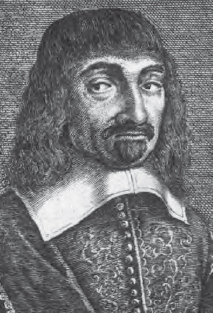Early Modern PhilosophyRené Descartes |
How did Descartes solve his evil demon hypothesis? |
René Descartes recounted everything that he could doubt—sensory information, the external world, his own thought processes, and the goodness of God—and noted that one thing he could not doubt was that he himself was doing the doubting. From this he concluded that he could not doubt that he existed, since someone or something must be doing the doubting. He wrote later about his famous cogito ergo sum, or “I think, therefore I am”:
I noticed that while I was trying to think everything false, it must needs be that I, who was thinking this, was something. And observing that this truth, I am thinking, therefore I exist was so solid and secure that the most extravagant suppositions of the skeptics could not overthrow it, I judged that I need not scruple to accept it as the first principle of the philosophy that I was seeking.

